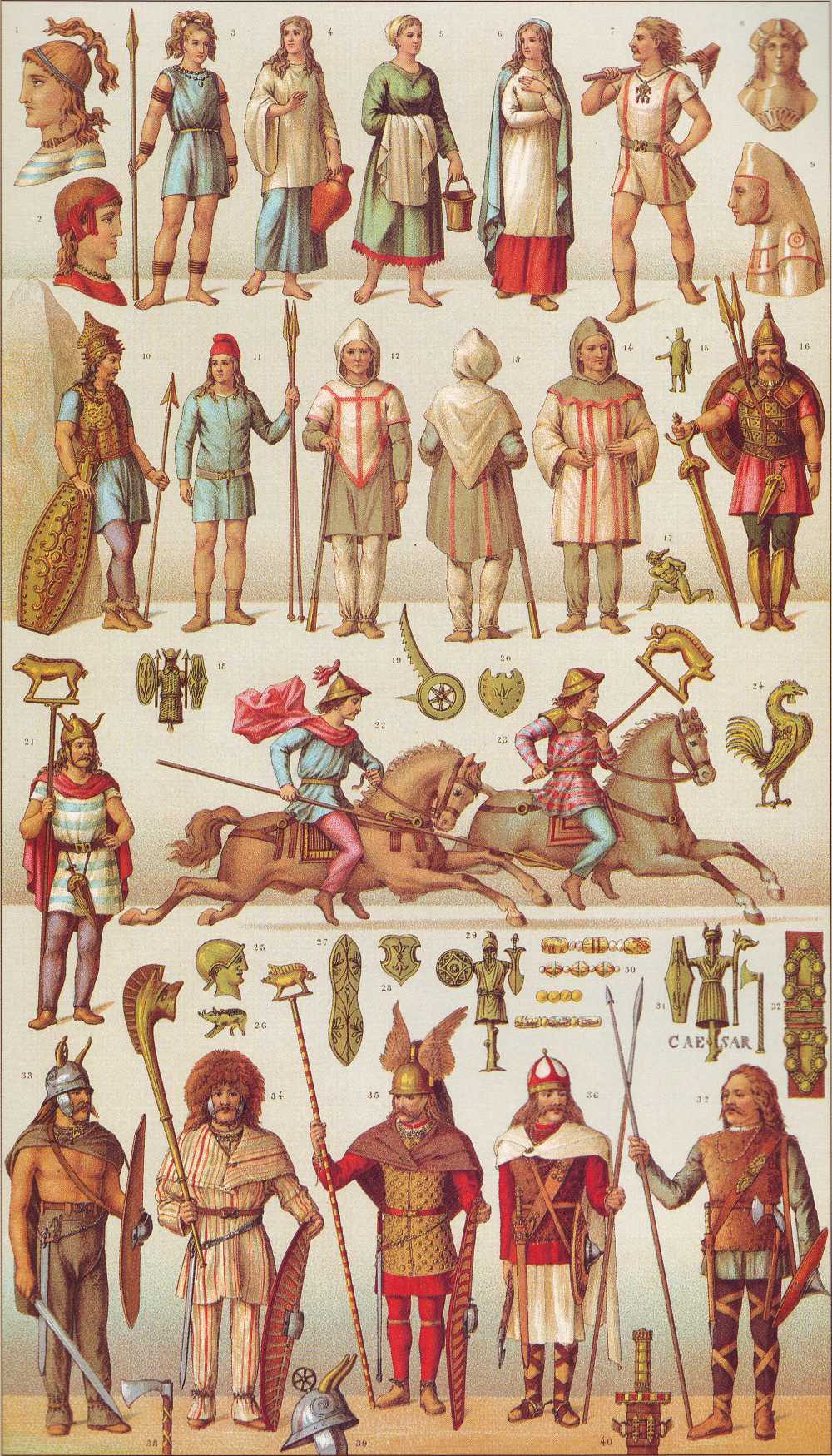
Try Amazon Fresh
THE HISTORICAL ENCYCLOPEDIA OF COSTUME
ALBERT RACINET
THE CLASSIC WORK OF THE 19TH CENTURYp40-41

THE GAULS AND THE CELTS - THE ANCIENT BRITISH - filled the entire ancient world with the sound of their weapons, until once victorious they proved unable to develop an organized sense of nationality. As a result, they lapsed into a state of military decadence two or three centuries before the birth of Christ.
Their military leaders carried splendid weapons and had magnificent horses and chariots. Over a tunic embroidered with flowerets of gold, a chief would wear a gilded cuirass or a shiny coat of iron mail - a Gallic invention. This was beautiful but ineffective, and in 58BC the Gauls were conquered by Julius Caesar.1 The chief Sutticos de Rouen, with his hair tied in a pony-tail.
2 A chief in everyday dress: his hair is loose and he is wearing a collar of coloured beads.
3 A warrior, with his hair tied up.
4, 5, 6. & 8 Gallic women. Like the Romans they used cosmetics: their hair was often powdered with white ash; they washed their faces in beer-foam; and darkened their eyebrows with liquid taken from the garfish. They wore long robes, often with aprons, and like Gallic men had a passion for jewellery. The barefoot woman in 4 has loose hair and a tunic with long, wide sleeves. The woman in 5, also barefoot, wears a tunic hemmed with a red band that is cut to look like a fringe.
The next women, 6, wears shoes, but her head is covered with her cloak in the style of a Roman pallium. This could be a sign of age, widowhood or captivity. The style of headdress in 8 was common in Gaul, and became so among female slaves in Rome.
7 A peasant, wearing a tunic with two vertical stripes and a belt.
10 A warrior leaning against a menhir. The helmet, cuirass and shield are decorated with studs and points; his shoes, called Gallica, have thick soles and are tied at the instep.
11 An armed peasant wearing a Phrygian hood. His outer garment is the famous caracalla, described by Strabon as the "Gallic palla".
9, 12, 13 & 14 Peasants wearing different types of bardocunulle - a hooded cloak. This was the origin of the monk's cowl.
16 A warrior wearing a helmet called a berru, so named because it was found in 1872 at Berru in France.

21 An infantryman carrying the ensign of the golden boar, a Gallic symbol of excellence. His tunic is striped with bright colours and his cloak is military, of a type called a sagum by the Romans.
22 & 23 Gallic horsemen were famous for their bravery. Here the ensign of the golden boar is also used as a weapon.
33 A warrior ready for combat, wearing an iron helmet (39) with chin straps, horns and a crest.
34 A soldier carrying the carnyx, the horn of war.
35 A Gallic chief with a bronze helmet decorated with two large wings from a bird of prey.